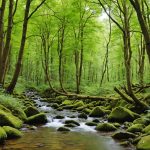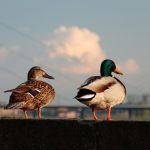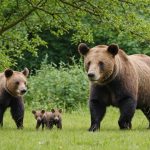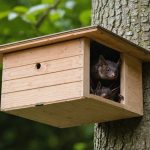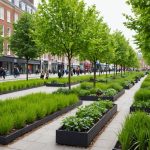Urban wildlife faces increasing challenges as cities expand. Protecting these habitats is essential not only for biodiversity but also for the wellbeing of urban communities. Simple actions like creating green corridors, planting native species, and minimizing pollution can make a significant difference. By reimagining our urban spaces, we can foster coexistence between nature and human life. Discover how your efforts can contribute to a thriving ecosystem right in your backyard.
Importance of Urban Wildlife Habitats
Urban wildlife conservation is crucial for maintaining biodiversity in cities. As urban areas expand, they encroach on natural habitats, making cities unexpected havens for various species. This transformation highlights the importance of creating and preserving urban wildlife habitats to support diverse ecosystems.
A découvrir également : How does the UK monitor and address the spread of wildlife diseases from domestic to wild animals?
In the UK, current statistics reveal a growing presence of urban wildlife. For instance, the population of urban foxes has seen a significant increase, with estimates suggesting thousands now inhabit cities like London. Similarly, hedgehogs and birds such as sparrows and blackbirds are adapting to urban environments, underscoring the resilience and adaptability of these species.
However, these urban wildlife populations face numerous threats. Habitat loss due to construction and development is a primary concern, leading to fragmented ecosystems. Pollution, both air and noise, further exacerbates the challenges, affecting the health and behaviour of urban wildlife. Additionally, the use of pesticides in gardens and green spaces can harm non-target species, disrupting the delicate balance of urban ecosystems.
Dans le meme genre : Empowering Your Cat: Strategies to Ease Sensory Processing Challenges and Alleviate Daily Anxiety
Addressing these threats requires a concerted effort in urban wildlife conservation. By enhancing green spaces, reducing pollution, and promoting biodiversity-friendly practices, cities can become thriving habitats for wildlife, ensuring the preservation of biodiversity in urban landscapes.
Creating Green Spaces
Urban green spaces play a pivotal role in supporting wildlife by providing essential habitats. These areas, which include parks, gardens, and community gardens, offer refuge and resources for various species, contributing to urban biodiversity. By integrating natural elements, such as native plants and water features, green spaces can attract and sustain wildlife, creating vibrant ecosystems within city landscapes.
Community Gardens: A Haven for Wildlife
Community gardens are excellent examples of urban green spaces that benefit both humans and wildlife. They foster community engagement and education while promoting biodiversity. Designing these gardens involves selecting native plant species that provide food and shelter for local fauna. Incorporating diverse plant layers, from ground cover to trees, enhances habitat complexity, attracting a wider range of species.
Successful Green Space Initiatives
Several cities have successfully implemented green space initiatives. For instance, London’s Queen Elizabeth Olympic Park has transformed a former industrial area into a thriving urban green space, supporting an array of wildlife. Similarly, community gardens in New York City have become vital green oases, offering habitats for pollinators and birds. These case studies demonstrate the potential of well-designed urban green spaces to enhance biodiversity, improve air quality, and foster community well-being. By prioritising the development and maintenance of urban green spaces, cities can create sustainable environments for both wildlife and residents.
Responsible Gardening Practices
Gardening can be a powerful tool for fostering urban biodiversity. By adopting sustainable gardening practices, individuals can transform their gardens into wildlife havens. One key approach is selecting native plants, which are well-suited to local climates and provide essential resources for local wildlife. Native plants offer food and shelter, supporting pollinators and other species that rely on them for survival.
Reducing pesticide use is another wildlife-friendly gardening practice. Pesticides can harm beneficial insects and disrupt ecological balance. Opting for organic gardening methods, such as using natural pest repellents or encouraging predatory insects, can maintain garden health without harming non-target species. This approach not only protects wildlife but also promotes a healthier garden ecosystem.
Incorporating wildlife habitats into residential gardens is crucial for supporting urban biodiversity. Simple additions like birdhouses, bee hotels, and small ponds can make a significant difference. These features provide nesting sites and water sources, attracting a diverse range of species. By embracing these practices, gardeners can create vibrant, sustainable environments that benefit both humans and wildlife, fostering a harmonious coexistence in urban areas.
Reducing Pollution and Environmental Impact
Urban pollution poses significant challenges to wildlife habitats. Air pollution from vehicles and industries can harm respiratory health in animals, while water pollution from runoff and waste affects aquatic ecosystems. These pollutants disrupt the balance of urban environments, making it essential to address their impact.
To combat these issues, cities can implement strategies to reduce pollution. Encouraging the use of public transport and cycling can decrease vehicular emissions, improving air quality. Additionally, installing green roofs and walls can absorb pollutants and provide habitats for urban species. Businesses can contribute by adopting cleaner technologies and waste management practices, reducing their environmental footprints.
Individuals also play a crucial role in enhancing environmental sustainability. Simple actions like reducing water usage, proper waste disposal, and supporting local clean-up initiatives can have a significant impact. By making conscious choices, residents can contribute to healthier ecosystems.
Promoting awareness and collaboration among communities, businesses, and governments is vital for reducing urban pollution. By working together, we can create sustainable urban environments that support both wildlife and human populations, ensuring a balanced and thriving ecosystem.
Community Involvement and Education
Engaging communities in conservation efforts is essential for the protection of urban wildlife. Community conservation initiatives empower residents to actively participate in preserving local biodiversity. By fostering a sense of responsibility and connection, these programs enhance the effectiveness of wildlife protection strategies.
Wildlife education plays a pivotal role in raising awareness and understanding. Educational programs can range from workshops and seminars to school curriculums, all aimed at informing the public about the importance of biodiversity. Knowledgeable communities are more likely to adopt sustainable practices that benefit urban ecosystems.
Collaborating with local organizations amplifies conservation efforts. Partnerships with environmental groups and municipal bodies can lead to the development of comprehensive conservation plans. These collaborations often result in successful projects, such as habitat restoration and species monitoring, which are critical for sustaining urban wildlife populations.
Involving the community in conservation not only protects wildlife but also enriches urban life. Residents gain a deeper appreciation for their natural surroundings, fostering a harmonious coexistence with nature. Through education and collaboration, cities can cultivate environments where both humans and wildlife thrive, ensuring a sustainable future for urban biodiversity.
Legislation and Policy for Wildlife Protection
Wildlife protection laws are pivotal in safeguarding urban biodiversity. In the UK, several pieces of legislation aim to protect wildlife within urban settings. The Wildlife and Countryside Act 1981 is a cornerstone, offering protection to various species and habitats. It regulates activities that may harm wildlife, ensuring a legal framework for urban conservation policies.
Case studies highlight the impact of such policies on local habitats. For instance, the designation of Sites of Special Scientific Interest (SSSIs) has preserved crucial urban wildlife areas. These sites, protected under law, serve as vital refuges for species like birds and insects, demonstrating the effectiveness of legal measures in maintaining biodiversity.
Individuals can play a significant role in advocating for stronger wildlife protection measures. Engaging with local councils, participating in public consultations, and supporting conservation organisations are ways to influence policy. By voicing concerns and proposing solutions, citizens can drive legislative changes that enhance urban wildlife habitats. This collective action not only strengthens existing laws but also fosters a community commitment to protecting urban biodiversity.


